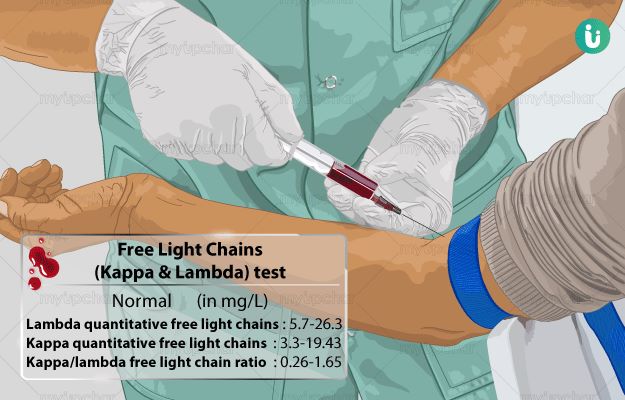What is Free Light Chains (Kappa & Lambda) test?
Every time we get exposed to harmful substances, our immune system produces specific proteins called immunoglobulins (also called antibodies) to fight against them. These immunoglobulins are complex molecules made of two heavy and two light chains of proteins.
Kappa and lambda are the names of the light chains. Normally, our body produces some extra light chains, which flow freely in the blood without getting attached to the heavy chains. However, those who have a problem with the plasma cells (a type of white blood cell that produces immunoglobulins) or an abnormality in the production of B lymphocytes and plasma cells in the bone marrow, have a large number of free light chains in their circulation.
The free light chains test measures the number of free light chains in your blood. It also checks if the number of one type of light chain is more than the other, which can indicate multiple myeloma.
This test helps to diagnose conditions which cause excess light chain production such as multiple myeloma, monoclonal gammopathy of undetermined significance (MGUS) and amyloidosis.
































